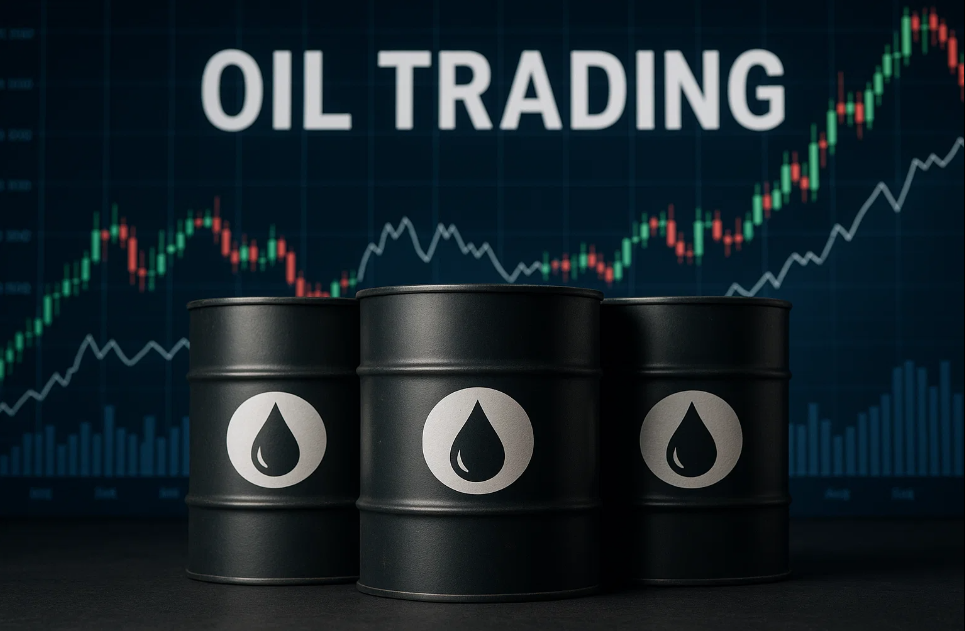
Oil markets are quite active, there can happen many changes within minutes, especially when there is major news. From weekly inventory reports to OPEC decisions and geopolitical tensions, news can indeed chape oil prices. These events can create opportunities to earn from strong moves for traders, but they also come with increased risk.
Trading oil around news requires preparation, awareness of what drives price changes, and a solid risk management plan. Without these, the volatility that creates opportunity can also lead to fast losses.
In this article, we will explore why oil prices react to news, the key events you should watch, and practical strategies for trading oil during news releases.
Oil is one of the most actively traded commodities in the world, and its price reflects the balance between supply and demand. Since it is quite important for the global economy, any news that affects supply, demand, or market expectations can move prices quickly.
For instance, a report indicating lower U.S. oil inventories may indicate increased demand or decreased supply, both of which drive up prices. However, news of increased production from large producers may cause prices to decline.
As markets consider the risk of supply disruptions, geopolitical events, particularly those that happen in the Middle East or other oil-producing regions, can cause price spikes. Economic data, such as GDP growth rates or industrial production numbers, can affect demand expectations.
Changes in currency, particularly the US dollar, have an impact on oil prices as well. Since oil is priced in US dollars, a stronger dollar may make it more costly for buyers who use other currencies, which may have an impact on price trends and demand.
If you want to prepare the best way to trade oil without problems, it is important to know which news events impact oil prices and how. Here are the main categories to watch:
The American Petroleum Institute (API) and the U.S. Energy Information Administration (EIA) provide weekly inventory reports. These are quite important for oil traders. They reflect how crude oil and refined product inventories are changing. This way, they givie a clearer picture of supply and demand trends in the U.S., which is the world’s biggest oil consumer. A larger draw in inventories can increase the prices, while a build may lead to price declines.
OPEC and its allies play a big role in the oil market by setting production targets. When they decide to cut or increase output, it can move prices right away. That’s why traders pay close attention to OPEC meetings and press statements; they're always on the lookout for hints about future decisions and adjust their strategies based on what they expect to happen next.
Geopolitical events such as conflicts or political unrest can affect supply, especially the ones happening in oil-producing countries. For example, tensions in the Middle East or sanctions that disrupt production can impact the market and increase the prices.
There are some measures that can give clues about future oil demand, such as economic growth, industrial activity, jobs, and so on. If the data is strong, it usually means demand for oil might rise. On the other hand, weak numbers can signal a slowdown, which tends to raise prices.
Weather can also affect oil markets. For example, hurricanes in the Gulf of Mexico can interrupt production or shut down refineries for a while. Cold weather can push up demand for heating oil, while milder temperatures might lead to lower demand and put some downward pressure on prices.

Trading oil around news events requires preparation and discipline. News can bring unexpected moves that can lead to losses. That is why you have to have a good plan for trading around news.
Use an economic calendar to track EIA and API inventory release times, OPEC meetings, and major economic data that can affect demand expectations. Being aware of these dates helps you plan your trading schedule and avoid being caught off guard.
News can create sudden price swings, and spreads may widen during high volatility. Be cautious about entering trades immediately after news breaks. Keep in mind that initial moves can sometimes reverse.
Setting limit orders helps you enter at your preferred price. Stop-loss orders protect you if the market moves against your position. These orders can help you manage risk, especially during fast markets.
News trading does not mean ignoring charts. It is important to look for confirmation from support and resistance levels, trendlines, or momentum indicators before entering a trade. This can help you avoid jumping into a move that lacks technical support.
If you are new to trading oil on news, consider using smaller position sizes. This allows you to gain experience with news-driven volatility in oil while limiting your risk.
Combining preparation with these strategies can help you trade oil around news with more structure and confidence.
While trading oil during news events can create opportunities, it also comes with risks that traders need to manage carefully. Here are the most common risks:
The market’s reaction to news may not always align with expectations. For example, a bullish inventory report might not lead to a price increase if other factors are weighing on the market.
To manage these risks:
Please take a look at our detailed article about risk management in oil trading as well.

With the correct resources, trading oil around news events can be more effective and keep you informed and ready.
An economic calendar helps you track key events like EIA and API inventory reports, OPEC meetings, and major economic data releases. This allows you to plan your trading schedule and prepare for potential volatility.
Using a reliable news feed keeps you updated on breaking news, geopolitical developments, and sudden market-moving events. Many platforms offer push notifications or in-platform alerts.
Platforms like MetaTrader 5 allow you to execute trades efficiently during fast markets. Features like:
Strong charting tools allow you to identify support and resistance levels, monitor trends, and spot technical setups that align with news-driven movements.
If you are new to trading oil on news, practicing on a demo account can help you build experience with news-driven volatility without risking real capital.
Trading oil on news can open the door to sharp market moves and new opportunities, but it requires preparation and discipline. News like inventory data, OPEC announcements, and geopolitical events can move oil prices quickly, and can create potential gains and risks.
You can approach news-driven trading by using resources like economic calendars, news alerts, and reliable trading platforms. Combining technical analysis with news awareness and maintaining clear risk management will help you handle volatility with confidence.
The goal of trading oil around news is to be prepared for when the right opportunity fits your plan, not to chase every headline.
Should I trade oil during news releases if I am a beginner?
It is better to start with a demo account to learn how oil reacts to news before trading with real money, as volatility can be challenging.
What are the best news events to watch for trading oil?
Key events include EIA and API inventory reports, OPEC meetings, major economic data, and geopolitical developments in oil-producing regions.
How can I manage risk when trading oil on news?
Use stop-loss orders, adjust position sizes to limit exposure, and avoid overleveraging, especially during high-volatility periods.
How quickly does oil react to news?
Oil can react within seconds to key news, leading to sharp price movements, so preparation and clear plans are essential.
Is trading oil on news suitable for all trading styles?
It mostly fits active traders who can handle volatility and react quickly, but may not suit long-term investors who prefer slower market movements.
Would like to learn how to look financial markets from a different angle? Then keep reading and invest yourself with ZitaPlus.